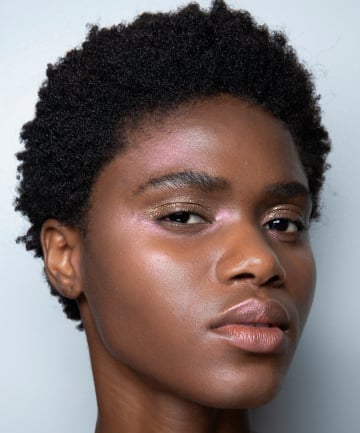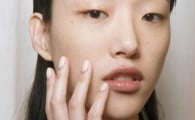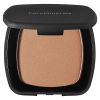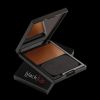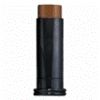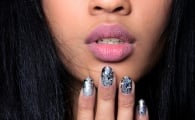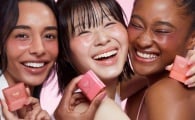Makeup
9 Best Foundations for Dark Skin TonesFor African American women, the perfect foundation is an elusive prize. Experts reveal how to research, test and (finally) find your perfect match |
Why "Deep Mocha" Doesn't Always Mean "Deep Mocha" Cosmetics makers design foundations based on two completely different color palettes — the traditional artists' palette, which is set up with a pure white canvas in mind, and a cosmetic palette, which uses the fleshy tone of real skin as its canvas. Imagine painting the same exact color on each of those canvases — the difference may be subtle on paper, but when the canvas is your skin, it's more than just a little noticeable.
To make things more complicated, on the artists' palette, yellow is always "cool," red is always "warm," and blue can be "neutral," "warm" or "cool". The cosmetic wheel classifies yellow as "warm," blue as "cool," and red can be either "neutral, "warm" or "cool." Lines like MAC and Max Factor use conventional artist's palettes, meaning a "Warm Beige" on their swatches have a pinkish tint, while the same "Warm Beige" in Clinique speak, which is based on a cosmetic palette, would have a yellow tint. To avoid looking radiant in one line to completely pallid in other, it all boils down to knowing how shades are categorized, then embarking on a process of elimination.
"Most lines have foundations in certain tone 'families' — Iman, Black Opal, Lancome, MAC," says Mills. Take MAC, for example. Instead of "Deep Honey," you'll see tones named NW46 or NW22. The capital letters represent members of a color family.
• C is for Cool (yellow-golden olive skin)
• NC is for Neutral Cool (golden beige skin)
• N is for Neutral (beige skin)
• NW is for Neutral Warm (pink beige skin)
• W is for Warm (pinkish skin)
Next up is the number, which is tied to lightness and deepness rather than undertone, and for many lines that also classify in this system, the higher the number, the deeper the color.
Now, what do we do with this information? "You need to determine what your undertone is first — then it gets easier," says Mills.
Image via Imaxtree
SEE NEXT PAGE: Flip Your Wrists
To make things more complicated, on the artists' palette, yellow is always "cool," red is always "warm," and blue can be "neutral," "warm" or "cool". The cosmetic wheel classifies yellow as "warm," blue as "cool," and red can be either "neutral, "warm" or "cool." Lines like MAC and Max Factor use conventional artist's palettes, meaning a "Warm Beige" on their swatches have a pinkish tint, while the same "Warm Beige" in Clinique speak, which is based on a cosmetic palette, would have a yellow tint. To avoid looking radiant in one line to completely pallid in other, it all boils down to knowing how shades are categorized, then embarking on a process of elimination.
"Most lines have foundations in certain tone 'families' — Iman, Black Opal, Lancome, MAC," says Mills. Take MAC, for example. Instead of "Deep Honey," you'll see tones named NW46 or NW22. The capital letters represent members of a color family.
• C is for Cool (yellow-golden olive skin)
• NC is for Neutral Cool (golden beige skin)
• N is for Neutral (beige skin)
• NW is for Neutral Warm (pink beige skin)
• W is for Warm (pinkish skin)
Next up is the number, which is tied to lightness and deepness rather than undertone, and for many lines that also classify in this system, the higher the number, the deeper the color.
Now, what do we do with this information? "You need to determine what your undertone is first — then it gets easier," says Mills.
Image via Imaxtree
SEE NEXT PAGE: Flip Your Wrists










